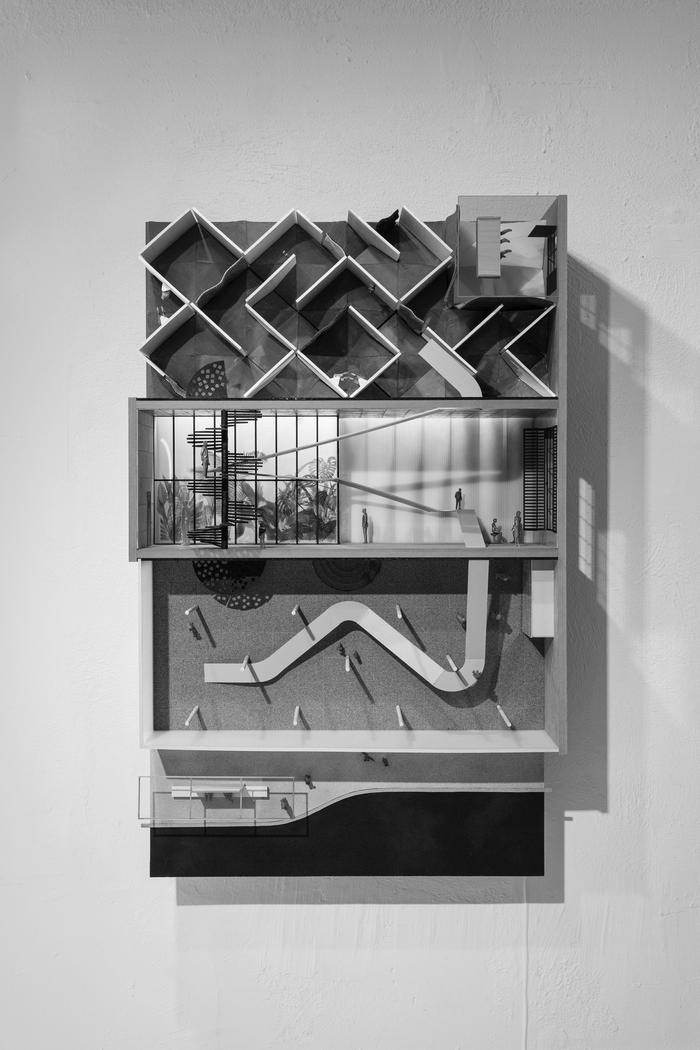How do you like the house? you ask ... Eh, well, I only just arrived. Which is true in a way. No knee-jerk reaction. No ready-made opinion, though the building has already made some kind of impression on me. Now we sit together on a sofa, overlooking the street. Do you know what was here before? Nobody ever remembers. The houses are just there, while you yourself are scurrying along with enough on your plate trying to swerve plastic bags carried by shoppers, an inattentive cyclist, other bodies moving at different speeds. Have you thought about it? A slight hesitation, then I clear my throat. Yes ... or no – perhaps we might... Sure, that’s why I wanted to meet you here. Okay then.
Come to think of it, I haven’t been to this neighbourhood before – if you don’t count the times I’ve passed through the main street, scanning the place from the windows of a bus. Everything nice and even: red brick – three storeys, four storeys, two storeys – then a gap, a square, bus shelter and curb. The house itself is an infill that echoes the roofline of the adjoining house. Fair enough, but a crack has opened up, allowing the sunlight to reach the back wall of the neighbouring house. Milk glass from top to bottom screens against prying eyes. This particular Wednesday, the glass seems to mirror the grey of the sky, overlaid with reflections of things moving past. Downpipes stream down the facade like tears. The pleated profile of the roof can only be seen from a distance.
Inside the house, the ground floor is surprisingly open and field-like, disrupted only by slender, cast-in-situ pillars, the cloakroom, a staircase that descends from above and a ramp that winds its way up through all three storeys to the top. Now, a cup of coffee would have been nice – but that doesn’t appear to be on offer. The floors, made of rubber and cork, form a kind of depression in the middle of the room: a small amphitheatre intended for group discussions. In fact, the entire house is built for conversation. On the upper floors are interview rooms which can be screened off entirely. Well, it’s not that we don’t talk, it just always seems to be the same things we talk about. And then there are people who never really say a word to us. Exchanges taking place in echo chambers where nobody seems to listen. I wonder who came up with the idea of creating a whole house in response?
The concept is not without precedents. There’s the English ‘parlour’: a reception room, from the French verb parler = to speak; a precursor of the drawing room, the middle classes’ grandest, most public room where you received your guests, as opposed to the more private living quarters, bedrooms and kitchens tucked away at the back. Also, something about the house reminds me of a lobby: those sound-muffling textiles, that cork flooring and the way you’re received on arrival: please put your phone there, then you can have it back afterwards. Right-o. We haven’t booked a guide, which you can if you want, someone to help kickstart the conversation. Imagine. The cloakroom reminds me of a vault in a bank with its stainless-steel interior, its lockers with their small keys and the mirrors that prevent me from letting go of the tension in my shoulders. Well, that’ll come later, I suppose.
The atmosphere changes when we reach the first floor. One recess after another, some of them reaching right up to the ceiling like oversized Chinese screens lined with marble or covered in meander patters. Small groups, each consisting of two or three people or sometimes more, nestle between cushions on padded benches or perch on stools with turned wooden legs. There are things we need to discuss. The sounds are subdued, which makes it difficult to listen in on other people’s conversations. A large window is divided into sections, some of which are openable, while others can be screened off with metal shutters and drawn aside or folded into the room in pairs and locked in position perpendicular to the walls. Similar windows, though smaller, can be found elsewhere in the building. At the back is a kind of conservatory; here the floor is made of hard-burned bricks, and the ceiling rises to a height of seven metres or so. Ferns interlace with fan palms, the smell of moist soil tickling my nose. Sunlight filters down through foliage, creating bright patches on the faces of the interlocutors.
All the materials – or most of them anyway – were donated to the cause. Concrete and wood from people who make concrete and wood. Insulation, waterpipes, lavatories and mirrors from those who make that kind of stuff. Etc. etc. The rest is recycled. I recognize some doors lined with oak veneer from a property I once visited, but only because I know what to look for. I wonder where the handrail comes from. A spiral staircase made of wrought iron points the way upstairs – that is, if you don’t want to follow the ramp. Now we’ve arrived in the space just below the roof, which buckles down and then seems to disintegrate into fragments, transforming the space into a maze of interlacing lines delimited by panelled walls and fabrics. Behind an orange felt curtain, I find a sofa. Rubber floors again, pink Pirelli.
Are you okay? Squinting a little and clutching the armrest, I let myself fall back into the depth of the sofa. We stay silent for a while. Look at each other, then away. Through the window, across the treetop outside. The hum of voices ricochet between the sloping walls before being devoured by the fabrics. Why don’t we find someone to talk to? Right then, let’s go.
